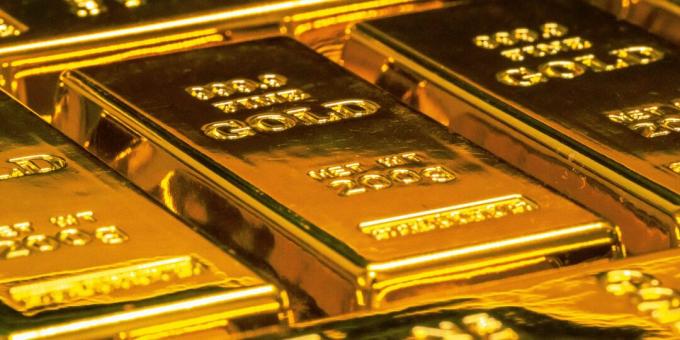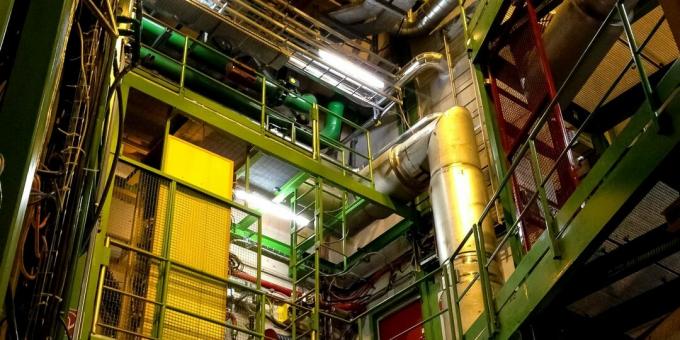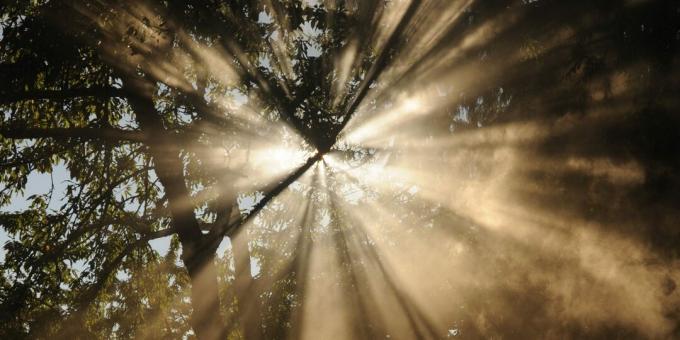5 incredible substances your body has
Miscellaneous / / August 17, 2021
If you think so, people are generally made of jewelry.
1. Precious metals

Mostly people areYU. N. Kukushkin. Chemical elements in the human body / St. Petersburg State Technological Institute from water (about 60%), as well as carbon and oxygen. But in addition to these boring and ordinary chemical elements, there are also rarer gizmos in you that give your body a certain economic value. For example, gold.
The blood of an ordinary person weighing 70 kg contains 1. How much blood is in the human body?
2. M. Yukawa, K. Amano, M. Suzuki ‑ Yasumoto, M. Terai. Distribution of trace elements in the human body determined by neutron activation analysis / Archives of Environmental & Occupational Health 0.2 mg of gold is enough to make a bar the size of a grain of sand. In addition, you contain slightly smaller amounts of silver and platinum. However, there is a catch: in order to extract them, you have to drain all blood.
Although there is a way to extract minerals from people without bloodshed. Scientists from the US Geological Survey investigated
P. Westerhoff, S. Lee. Characterization, Recovery Opportunities, and Valuation of Metals in Municipal Sludges from U.S. Wastewater Treatment Plants Nationwide wastewater for anything of value and found that human feces contain abundant minerals such as gold, copper, silver, and vanadium.It is estimated that the city of one million people flushes $ 13 million worth of precious metals down the toilet every year.
And in Tokyo, in Nagano Prefecture, there is even a wastewater treatment plant that has conducted experiments.Sewage sludge could contain millions of dollars worth of gold / Science Magazine for the extraction of gold from organic waste. According to the reports of this organization, there is about 1.9 kg of gold per ton of faeces. The profitability surpassed the Japanese mine Hishikari Mine, one of the largest in the world, where it manages to extract 20 to 40 g of precious metal per ton of processed material.
True, unlike ore, this raw material stinks. But money doesn't smell.
2. Ozone

Ozone is a special modification of oxygen. It does not consist of two atoms (O2), like the gas that we need for life, but of three (O3) and is extremely unstable. Ozone in the atmosphere is generated by exposure to ultraviolet radiation and during thunderstorms. It is this substance that gives cloudy weather that very “smell of freshness.” The ozone layer in the stratosphere protects us from the dangerous solar radiation.
In addition, ozone is used in industry, for example to kill mold, bacteria and viruses.
In large quantities, it is toxic and carcinogenic. It is all the more surprising that our immune system began to use 1. G. J. Jakab, E. W. Spannhake, B. J. Canning. The effects of ozone on immune function / Environmental Health Perspectives
2. Humans produce ozone, researchers find / The Globe and Mail ozone to fight various diseases long before people even knew about its existence.
Neutrophils (a type of white blood cell in the human body) create ozone from the oxygen we breathe in order to destroy invasive bacteria, viruses and protozoa with it. By applying a toxic substance, leukocytes free your body from intruders.
In addition to participating in immune reactions, ozone is used by the human body to produce vitamin D and break down 1. G. J. Jakab, E. W. Spannhake, B. J. Canning. The effects of ozone on immune function / Environmental Health Perspectives
2. Humans produce ozone, researchers find / The Globe and Mail cholesterol. However, this also produces toxic substances that lead to the appearance of diseases such as atherosclerosis and arthritis. Therefore, get carried away with foods that contain a lot cholesterol, not worth it.
3. Radioactive elements

For most people, radiation is something very scary, but distant. It allegedly occurs at nuclear power plants, test sites and other places that most of us do not usually visit - and good.
However, to let you know, radiation closer than it seems. Our mother Earth (more precisely, unstable isotopes in its interior), the air we breathe, the Sun in the sky and particles that regularly arrive from space create a natural backgroundRadiation doses to the population of the Russian Federation in 2019 / NIIRG named after Professor Ramzaevwhich consistently rewards us with 2.4 to 3.98 millisieverts per year. It's about like eight chest x-rays - and nothing, we live somehow.
But the most interesting thing is that even if you put a person in an isolated lead chamber, he will still be irradiated. Because there are radionuclides in our bodies.
For example, a person weighing 70 kg containsAND. BUT. Leenson. Radioactivity within us / Chemistry and life 140 g of potassium-40 isotope. Every second, about 4,250 atoms of this substance decay in your body. In addition, unstable carbon-14 can be found in humans. All of these isotopes emit a total of 0.56 millisievert annually (one fluorography).
And we also have thorium and uranium, which enter the body along with food. Their main sources 1. Our bodies are also… slightly radioactive / Radioactivity
2. Toxicological Profile for Uranium / ATSDR's Division of Toxicology and Human Health Sciences unwashed vegetables, especially potatoes and radishes, are reported by the US Environmental Protection Agency.
So carefully wash your food before you put it in your mouth - otherwise, what good, you start glowing in the dark... Just kidding.
4. Antimatter

Antimatter is made up of antiparticles. They are the same as those from which our Universe is woven, but with negative charges. Because of this property, antimatter cannot coexist with ordinary matter.
As soon as antimatter comes into contact with matter, they both annihilate, that is, they annihilate, releasing a huge amount of energy. The atomic charge would just be a clapperboard next to a bomb filled with antimatter. If, of course, it is possible to create the latter in sufficient quantity. It is very difficult, therefore antimatter is the most expensive substance in our Universe: for example, only 1 g of antihydrogen will cost estimates NASA, from $ 62 billion.
It is all the more surprising that antimatter... is synthesized by our bodies. True, in very small doses.
As we mentioned, humans contain about 140 g of the radioactive isotope potassium-40. When decaying, it creates antineutrino particles. In the body disintegrates in a second 1. Radioactive Human Body / Harvard Natural Sciences Lecture Demonstrations
2. D. W. Engelkemeir, K. F. Flynn, L. E. Glendenin. Positron Emission in the Decay of K40 / Physical Review
3. A. Moiseev, K. Yoshimura. Cosmic ‑ Ray Antiproton Flux in the Energy Range from 200 to 600 MeV / The Astrophysical Journal approximately 4,400 potassium-40 atoms. And about 89.25% of these atoms undergo so-called beta-negative decay. This means that about 4,000 positrons are produced in your body every hour.
Unfortunately, their lifetime is very short, because these particles decay immediately when they collide with your electrons and protons. So you are unlikely to accumulate enough antimatter to get rich. On the other hand, you won't explode - everything has its advantages.
5. Star dust

Generally speaking, it is wrong to say that people contain "stardust". In fact, they are from it made entirely. Essential elementsHow much of the human body is made up of stardust? / Physics Central of our body - carbon, nitrogen, oxygen, phosphorus, iron and sulfur - make up almost 93% of the total number of atoms in the body.
These elements were born in the hot bowels of the stars that belonged to the first generation of stars in the Universe.
A long time ago, billions of years ago, our Sun did not exist. Instead, a huge star cut circles along the Milky Way 1. M. Gounelle, G. Meynet. Solar system genealogy revealed by extinct short ‑ lived radionuclides in meteorites / Astronomy and Astrophysics
2. R. Boyle. The Secret Life of the Sun / In the World of Science, which was at least 30 times larger than our star. Astronomers gave her the unofficial name Coatlicue - this is aztec goddess, mother of the Sun.
At the end of her life cycle, Coatlicue decided to jerk, creating a huge molecular nebula. It shrank under the influence of gravity 4.6 billion years ago, forming the sun and planets, as well as several other stars closest to us. There is a possibility that matter from other nebulae was mixed with it, but the main merit here is still Coatlicue. From the chemical elements synthesized by it, life arose on Earth.
But Coatlicue, in turn, was formed even earlier from other molecular nebulae that turned out in a similar way. So the substances we are made of have passedAre we really made of stardust? / Natural History Museum not through one, but through several supernovae.
After about 7.7 billion years from now, the Sun will decide to follow the example of Coatlicue. But for a normal explosion, it does not have enough mass, so it will simply turn into a red giant, engulf the Earth, and then shed its gas shells, creating a planetary nebula.
In the future, something interesting can also be formed from it.
Bonus. Light

You probably know that the human body emits heat, which is visible in the infrared range. Some animals, for example snakes, can literally see people and other mammals even in the dark, capturing this radiation. You, in principle, can do the same, you just have to buy a thermal imager.
But for your information, humans can emit light in the visible range too!
The light of the human body can be called visible, however, rather conditionally: it is too weak for us to catch with our eyes. However, humans still produce photons.
This phenomenon, called human bioluminescence, was discoveredStrange! Humans Glow in Visible Light / Live Science Masaki Kobayashi is a biomedical photonics specialist at the Tohoku Institute of Technology in Sendai, Japan. The research required special cameras that are highly sensitive to light and capable of detecting single photons.
Humans are not unique in their ability to create light. In fact, almost all living things emit it as a by-product of biochemical reactions involving free radicals. Some creatures have achieved significant success in this field - look how some jellyfish or the same fireflies flicker. And the glowing mushrooms are especially impressive. The main thing is not to take them inside.
Especially strongly (well, compared to the rest of the body) in humans they glow 1. M. Kobayashi, D. Kikuchi, H. Okamura. Imaging of ultraweak spontaneous photon emission from human body displaying diurnal rhythm / PLoS ONE
2. R. Edwards, M. C. Ibison, J. Jessel-Kenyon, R. B. Taylor. Measurements of human bioluminescence / Acupuncture & Electro-Therapeutics Research face and neck, and at a certain time of the day - at four o'clock in the afternoon. This is due to the fact that these places are constantly in the light and tan more strongly.
It is melanin, the pigment that colors the skin, that has weak fluorescent components. By 16 o'clock, its content in the body reaches its maximum - to protect from the sun. And then it declines, because the body realizes that it is already getting dark. Circadian rhythms, all things.
Read also🧐
- 6 things our body does for a reason
- 7 misconceptions of past doctors about the human body and health
- Why do people implant chips in themselves, how it expands the capabilities of the human body and why is it dangerous?
Scientists talk about dozens of COVID-19 symptoms that can persist for more than 6 months
Scientists have named the characteristic symptoms of the delta strain of coronavirus. They are different from the usual COVID-19


